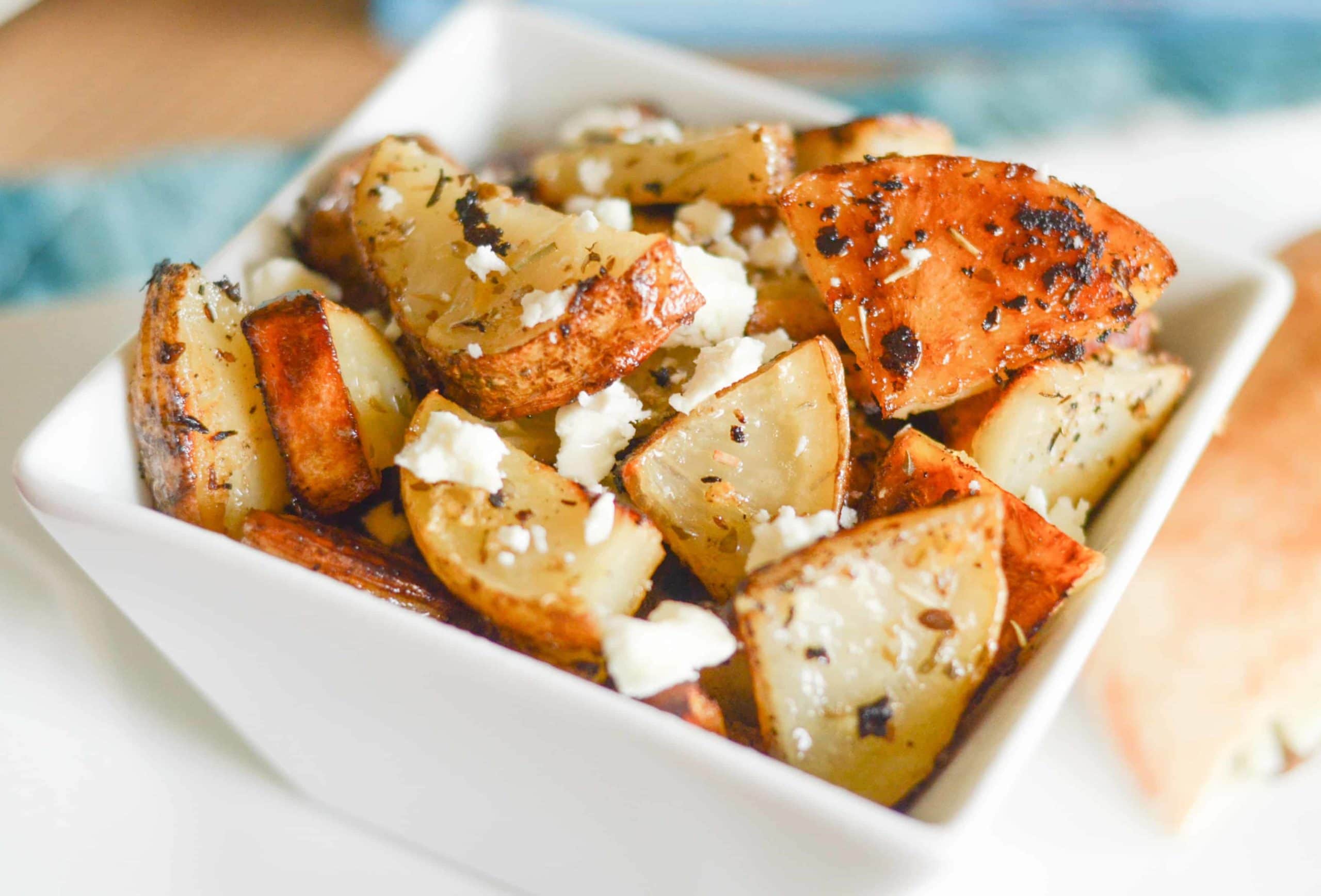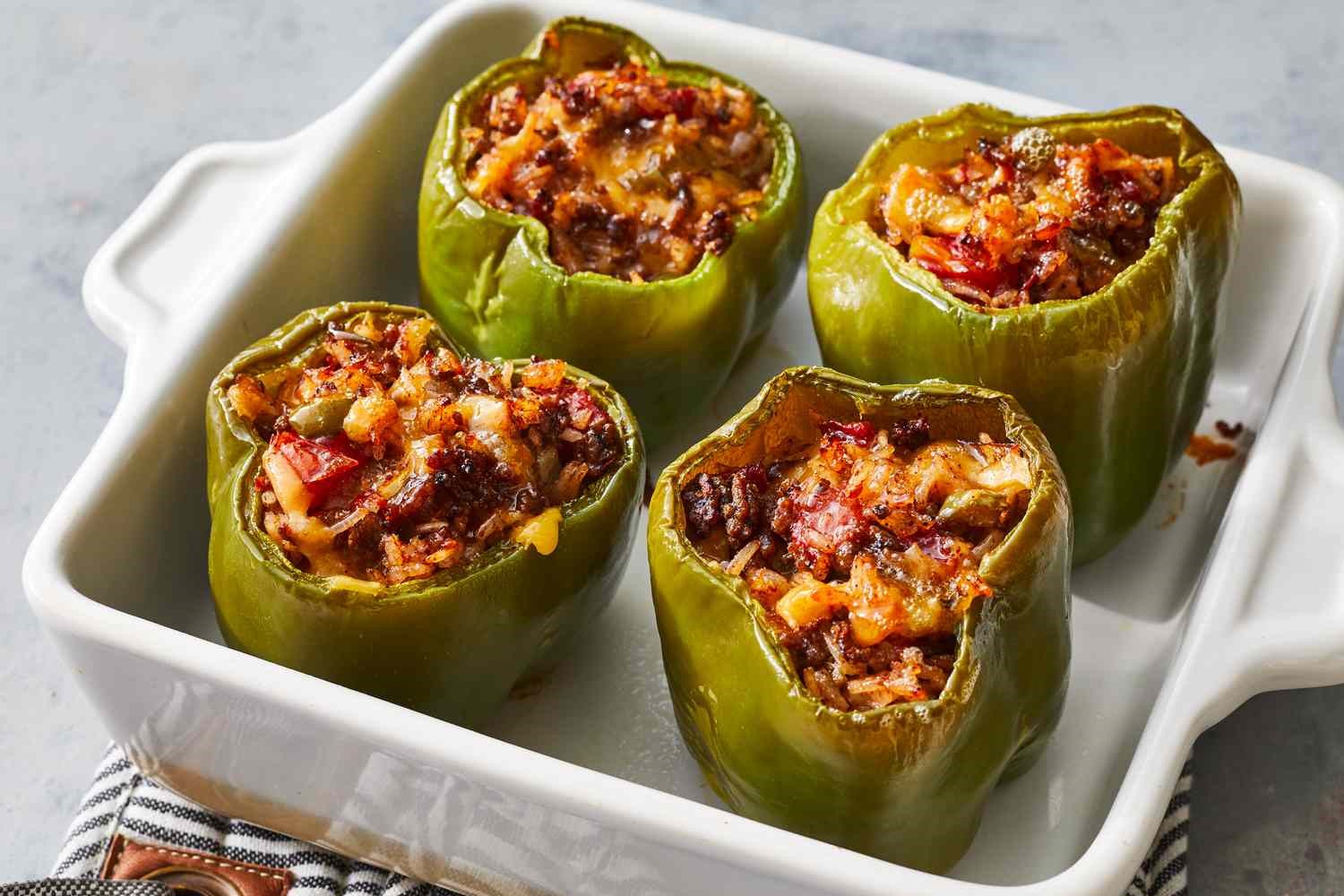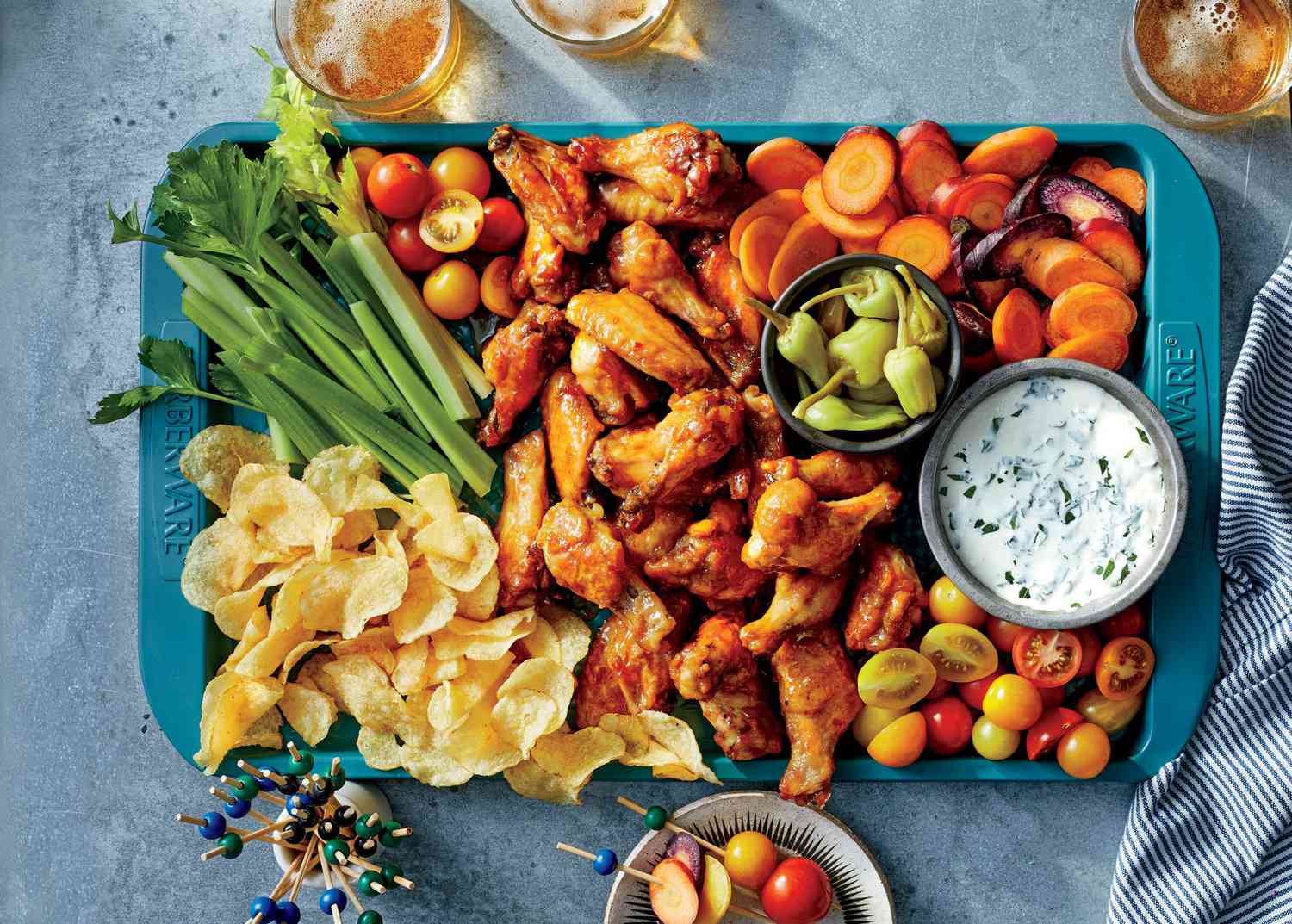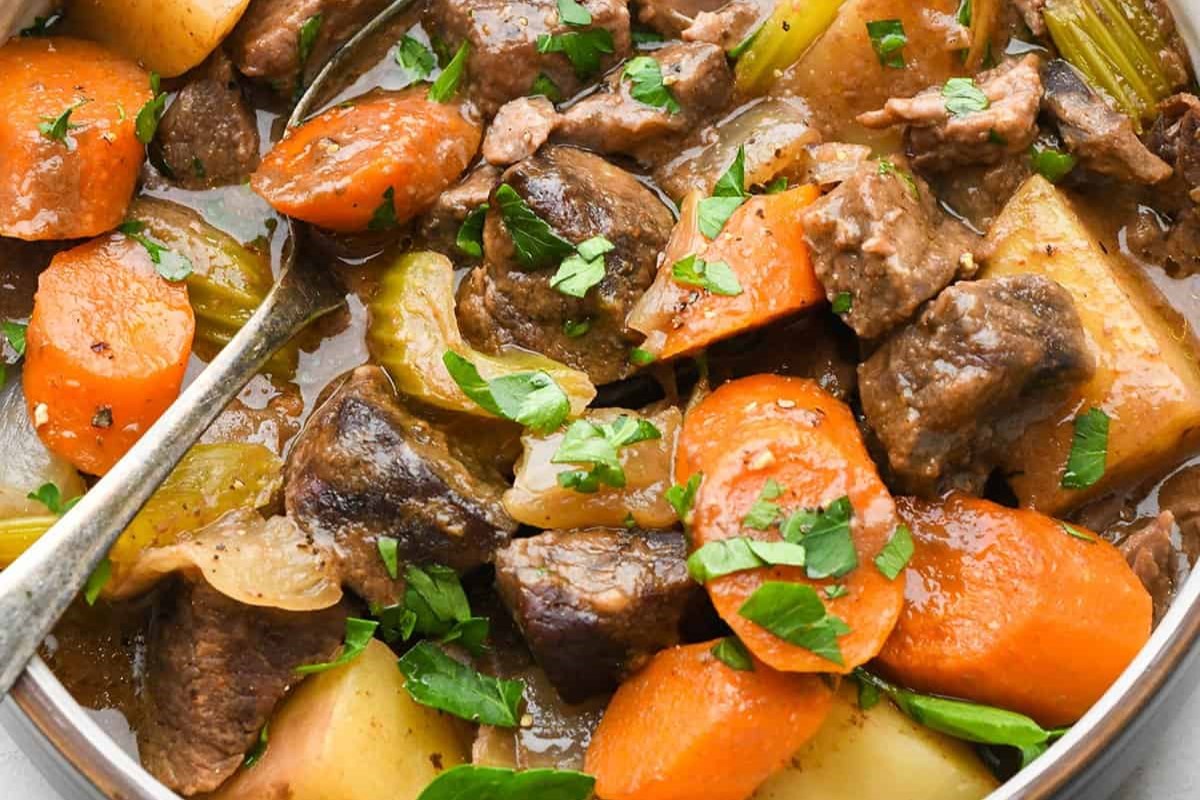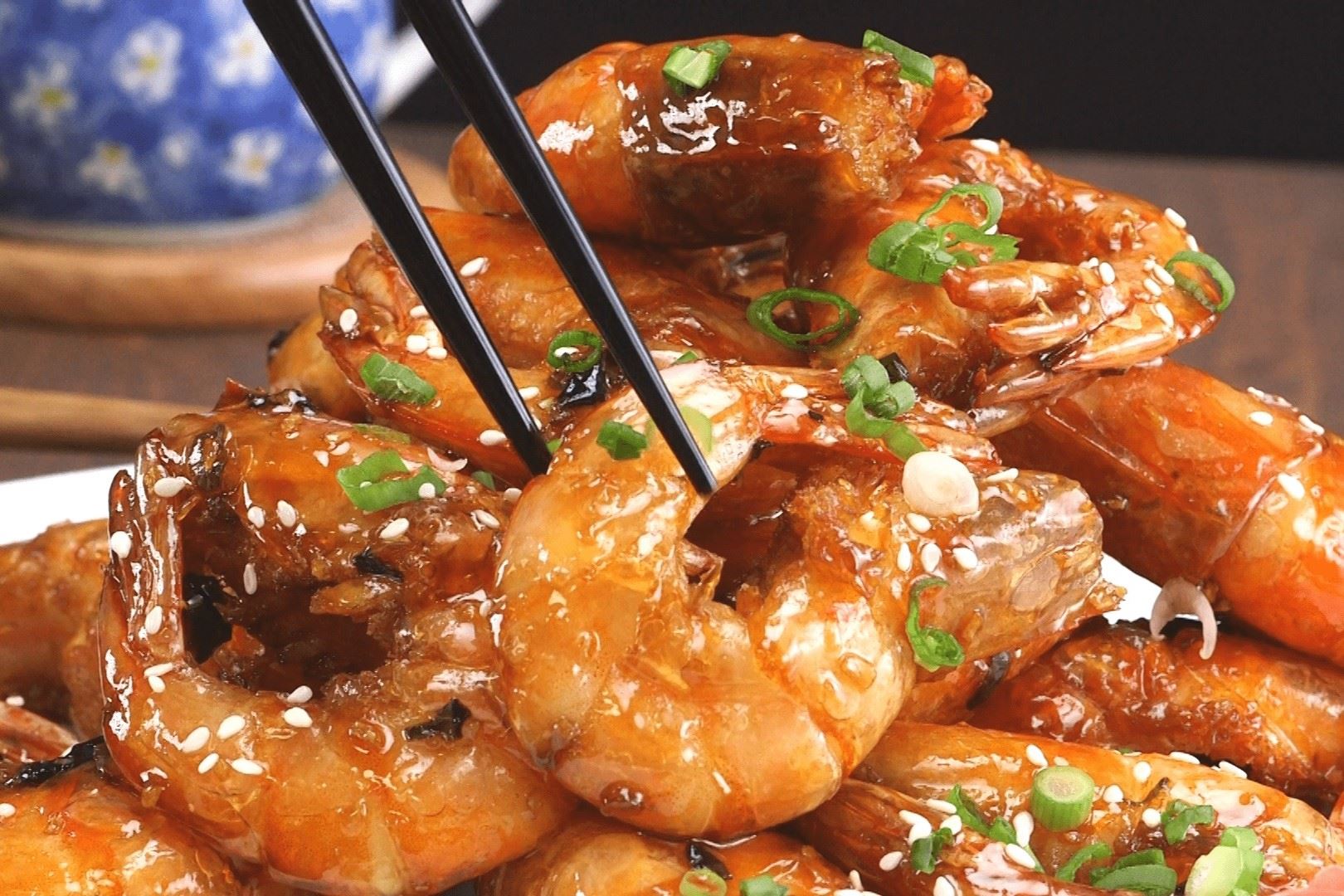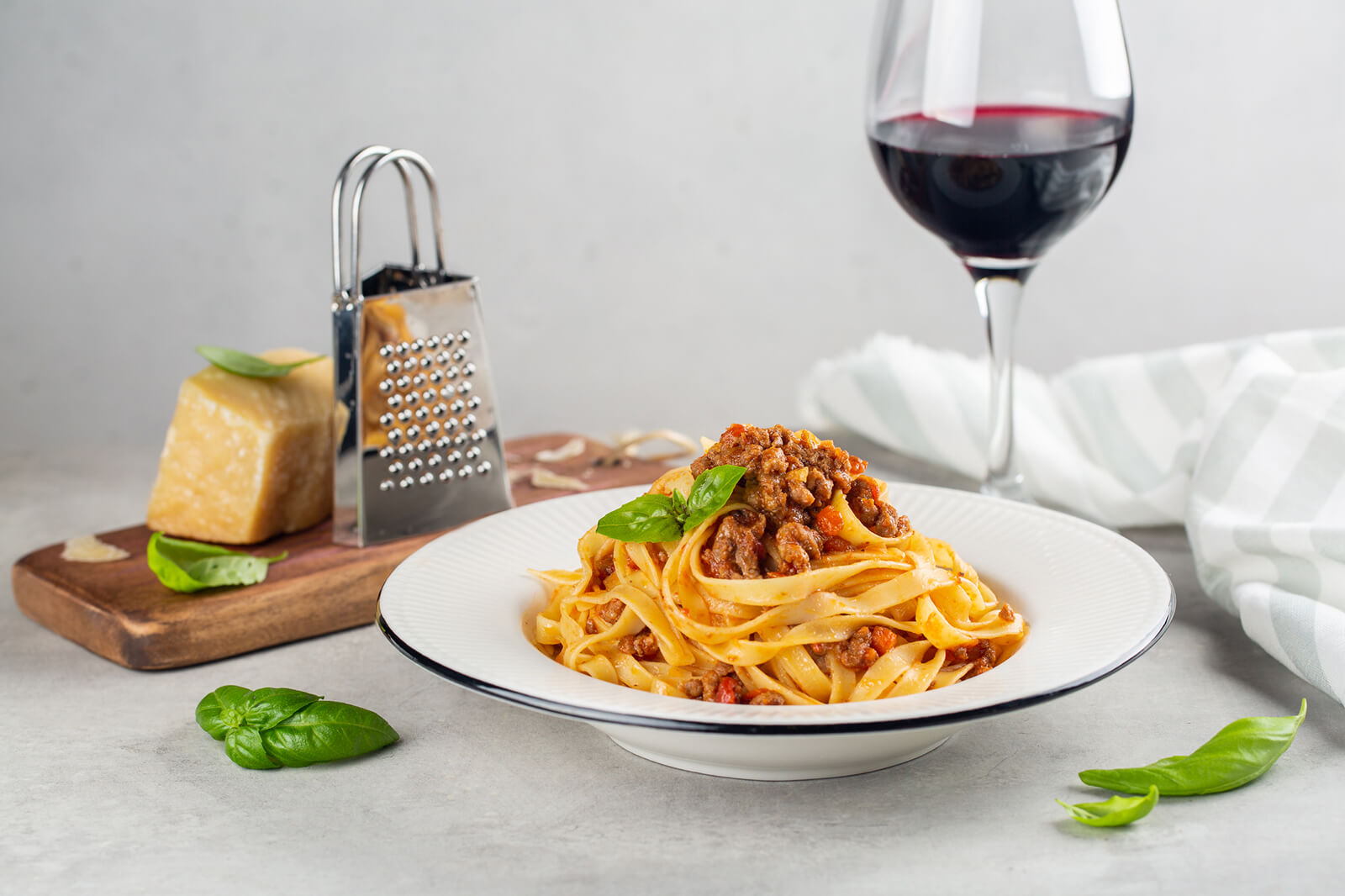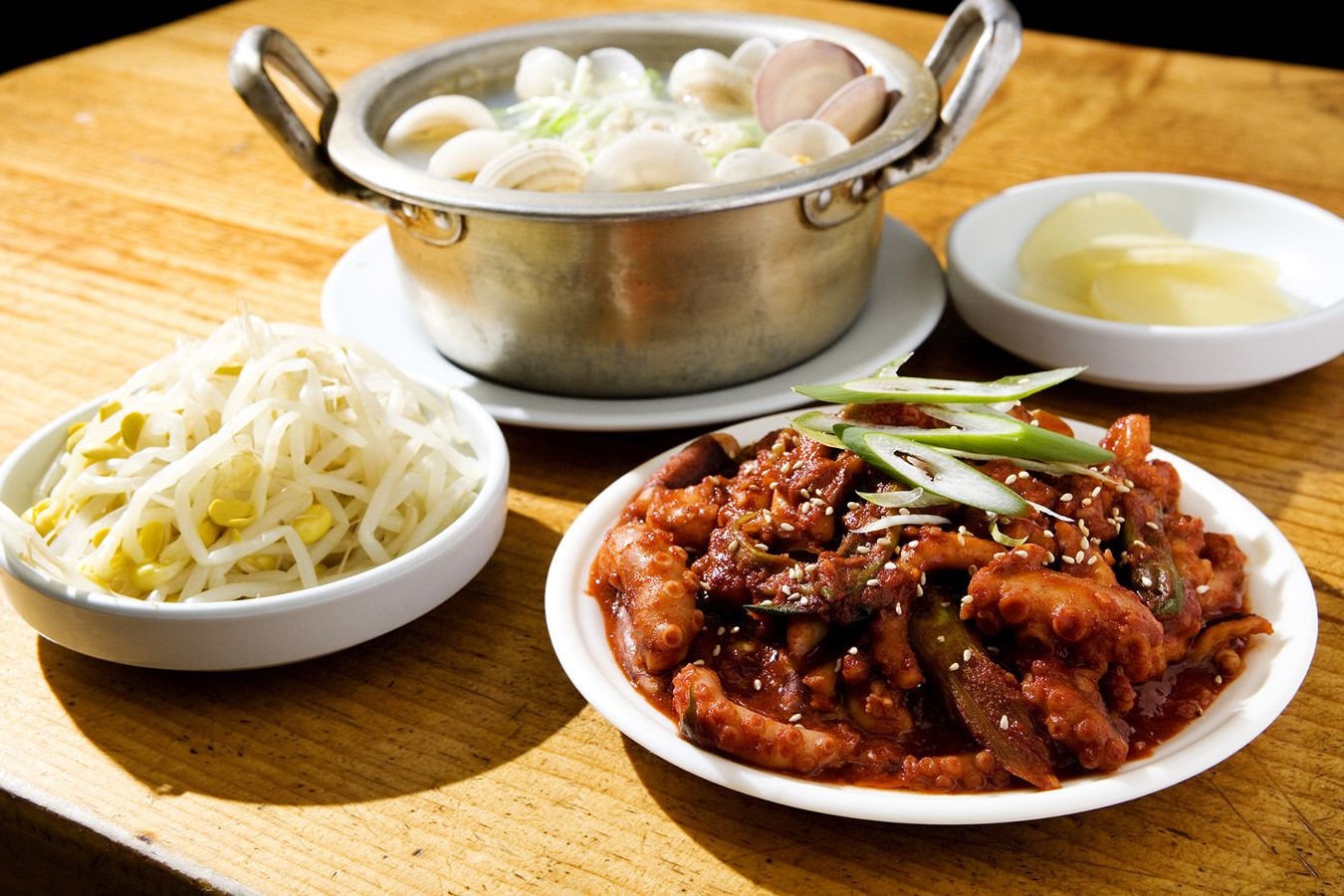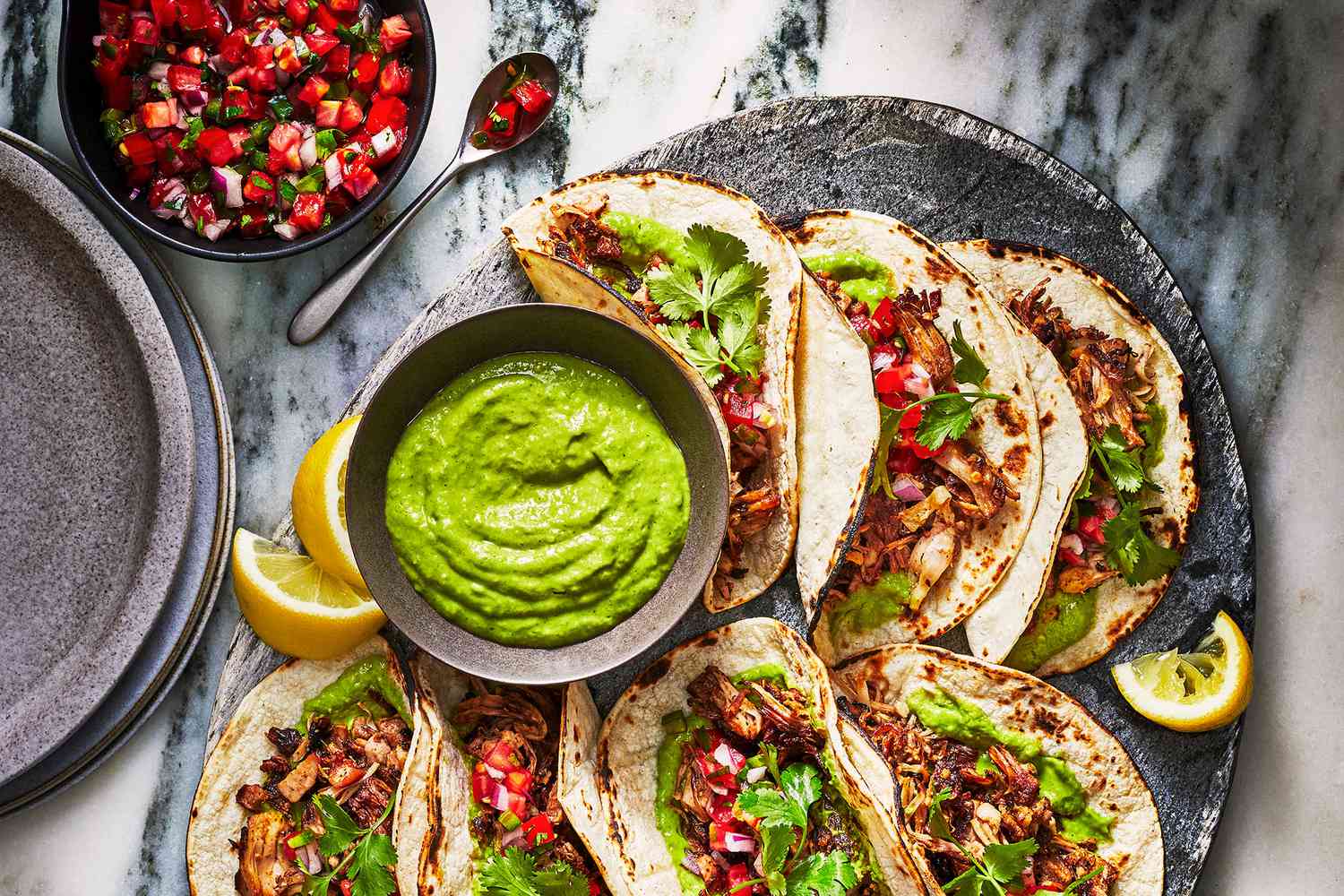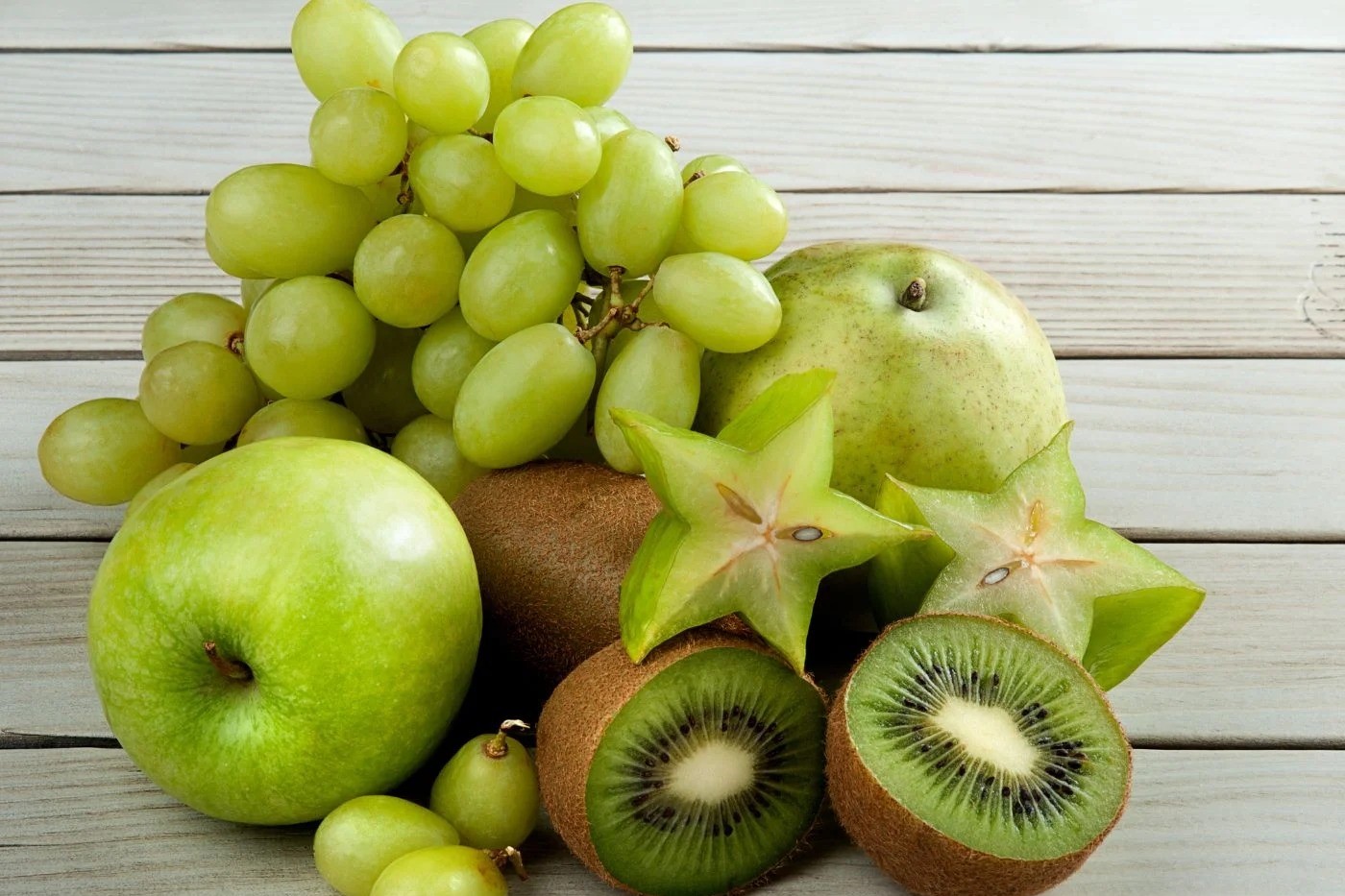Home>Food and Cooking>10 Delicious Side Dishes To Serve With Chinese Dumplings
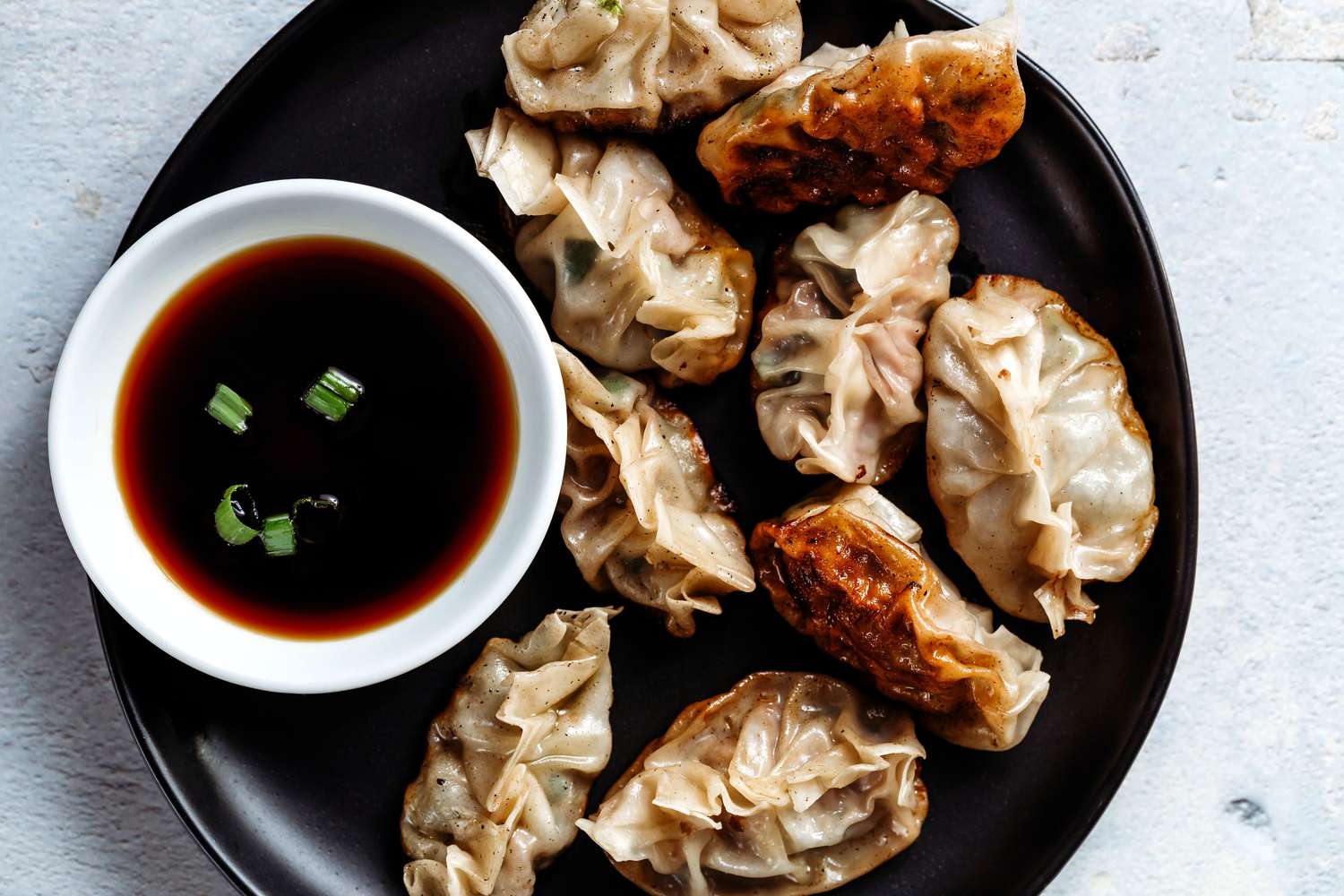

Food and Cooking
10 Delicious Side Dishes To Serve With Chinese Dumplings
Modified: February 29, 2024
Discover 10 delectable side dishes to complement your Chinese dumplings and elevate your food and cooking experience. Explore a variety of options to enhance your meal!
(Many of the links in this article redirect to a specific reviewed product. Your purchase of these products through affiliate links helps to generate commission for Noodls.com, at no extra cost. Learn more)
Table of Contents
Scallion Pancakes
Scallion pancakes, also known as cong you bing, are a popular Chinese appetizer that perfectly complements the flavors of Chinese dumplings. These savory, flaky, and aromatic pancakes are made with a simple dough infused with chopped scallions and a hint of sesame oil. The result is a delightful blend of textures and flavors that elevate any dumpling feast.
Preparation:
To create scallion pancakes, start by making a basic dough using all-purpose flour, water, and a touch of salt. The dough is then rolled out into a thin sheet and generously brushed with sesame oil. Next, a generous amount of finely chopped scallions is sprinkled over the oiled surface. The dough is then tightly rolled into a log and coiled into a spiral before being flattened into a pancake shape. Finally, the pancake is pan-fried until golden brown and crispy on the outside, while remaining tender and flavorful on the inside.
Serving:
When serving scallion pancakes with Chinese dumplings, consider cutting them into wedges or bite-sized pieces for easy sharing. These delectable pancakes can be enjoyed on their own or dipped into a savory soy-based sauce for an extra burst of umami flavor. The crispy layers of the pancake, combined with the aromatic scallions and nutty sesame oil, provide a delightful contrast to the soft and juicy dumplings.
Variations:
While the classic scallion pancake is a timeless favorite, there are creative variations to explore. Some cooks add additional ingredients such as minced garlic, shredded carrots, or even a touch of five-spice powder to infuse the pancakes with extra depth of flavor. These variations offer exciting twists on the traditional recipe, allowing for a personalized touch to suit individual preferences.
Cultural Significance:
In Chinese culture, scallion pancakes hold a special place as a beloved comfort food with a rich history. They are often enjoyed during festive celebrations, family gatherings, and as a symbol of good fortune. By incorporating scallion pancakes into a meal featuring Chinese dumplings, one can embrace the culinary heritage and traditions associated with these iconic dishes.
In summary, scallion pancakes are a delightful addition to any Chinese dumpling feast, offering a perfect balance of textures, flavors, and cultural significance. Their crispy yet tender nature, combined with the aromatic scallions and sesame oil, make them an irresistible companion to the delectable dumplings. Whether enjoyed as a starter or alongside the main course, scallion pancakes bring a touch of tradition and culinary artistry to the dining experience.
Stir-Fried Green Beans
Stir-fried green beans, also known as "乾煸四季豆" (gan bian si ji dou) in Chinese cuisine, offer a vibrant and flavorful accompaniment to Chinese dumplings. This classic side dish combines the crisp texture of fresh green beans with a savory and aromatic seasoning, creating a delightful contrast to the succulent dumplings.
Preparation:
To prepare stir-fried green beans, fresh green beans are trimmed and cut into uniform pieces, ensuring even cooking. The green beans are then quickly blanched in boiling water to preserve their vibrant color and crispness before being plunged into ice water to halt the cooking process. This blanching technique helps to retain the beans' natural crunch while enhancing their visual appeal.
The blanched green beans are then stir-fried in a hot wok with a combination of aromatics such as minced garlic, ginger, and scallions. The sizzle of the wok infuses the green beans with a tantalizing aroma, while the high heat ensures that they retain their crisp texture. A savory sauce, typically made with soy sauce, oyster sauce, and a hint of sugar, is added to the wok, coating the green beans with a rich umami flavor that balances the dish perfectly.
Serving:
When serving stir-fried green beans with Chinese dumplings, the vibrant green hues and enticing aroma of the dish create an inviting visual and olfactory experience. The crisp texture of the green beans, combined with the savory and slightly sweet flavors of the sauce, offers a delightful contrast to the dumplings' soft and savory profile. The combination of textures and flavors adds depth and variety to the overall dining experience.
Variations:
While the classic stir-fried green beans are beloved for their simplicity and natural flavors, there are creative variations to consider. Some cooks may add a touch of heat with dried red chilies or incorporate umami-rich ingredients such as fermented black beans or ground pork for added complexity. These variations allow for a personalized touch, catering to different taste preferences and culinary explorations.
Cultural Significance:
In Chinese culinary traditions, stir-fried green beans symbolize prosperity and abundance, making them a fitting addition to a meal featuring Chinese dumplings. Their vibrant color and satisfying crunch represent vitality and growth, adding symbolic significance to the dining experience. By incorporating stir-fried green beans into the meal, one can embrace the cultural heritage and auspicious connotations associated with this classic dish.
In summary, stir-fried green beans offer a delightful and visually appealing side dish that perfectly complements the flavors and textures of Chinese dumplings. Their vibrant color, crisp texture, and savory seasoning create a harmonious balance alongside the dumplings, enriching the overall dining experience with depth and cultural significance.
Hot and Sour Soup
Hot and sour soup, known as "酸辣湯" (suān là tāng) in Chinese cuisine, is a flavorful and aromatic soup that serves as a perfect companion to Chinese dumplings. This classic soup is renowned for its tantalizing blend of spicy and tangy flavors, creating a delightful contrast that complements the savory notes of the dumplings.
Preparation:
The preparation of hot and sour soup involves a harmonious combination of key ingredients to achieve its signature taste and texture. Typically, the soup base is created using chicken or vegetable broth, infused with a medley of aromatics such as ginger, garlic, and white pepper. The addition of dried wood ear fungus and bamboo shoots contributes to the soup's unique texture, while also enhancing its visual appeal with contrasting colors and shapes.
The "hot" element of the soup is derived from the use of white pepper and occasionally, a touch of chili oil, which infuses the broth with a subtle heat that awakens the palate. Meanwhile, the "sour" component is achieved through the incorporation of rice vinegar, which imparts a tangy acidity that balances the spiciness, resulting in a harmonious interplay of flavors.
Serving:
When paired with Chinese dumplings, hot and sour soup offers a sensory experience that elevates the overall dining affair. The robust aroma of the soup, enriched with the fragrance of ginger and garlic, sets the stage for a tantalizing culinary journey. The spicy and tangy flavors of the soup provide a refreshing contrast to the rich and savory dumplings, creating a dynamic interplay of tastes that excite the palate.
The diverse textures within the soup, from the tender bamboo shoots to the chewy wood ear fungus, add layers of complexity that complement the dumplings' soft and juicy filling. The interplay of flavors and textures between the soup and the dumplings enhances the dining experience, offering a symphony of sensations that captivate the senses.
Variations:
While the classic hot and sour soup is cherished for its traditional recipe, there are variations that cater to diverse preferences. Some variations may incorporate additional ingredients such as tofu, shiitake mushrooms, or even a splash of soy sauce to further enrich the soup's depth of flavor. These variations allow for a personalized touch, inviting culinary exploration and adaptation to individual tastes.
Cultural Significance:
In Chinese culinary traditions, hot and sour soup holds cultural significance as a symbol of balance and harmony. The interplay of contrasting flavors represents the philosophy of yin and yang, signifying the equilibrium of opposing forces. By incorporating hot and sour soup into a meal featuring Chinese dumplings, one not only embraces a culinary tradition but also honors the cultural symbolism associated with this iconic dish.
In essence, hot and sour soup is a captivating addition to a meal with Chinese dumplings, offering a harmonious blend of spicy, tangy, and aromatic elements that enhance the overall dining experience. Its complex flavors and cultural symbolism make it a fitting companion to the delectable dumplings, enriching the culinary journey with depth and vibrancy.
Chinese Cabbage Salad
Chinese cabbage salad, also known as "白菜沙拉" (bái cài shā lā) in Chinese cuisine, offers a refreshing and vibrant side dish that pairs exquisitely with Chinese dumplings. This light and crispy salad showcases the delicate flavors of Chinese cabbage, also known as Napa cabbage, and is elevated with a zesty dressing that tantalizes the taste buds.
Preparation:
To prepare Chinese cabbage salad, Napa cabbage is thinly sliced to create delicate ribbons that offer a satisfying crunch. The cabbage is then combined with an assortment of colorful vegetables such as shredded carrots, vibrant bell peppers, and crisp snow peas, adding a medley of textures and visual appeal to the salad. The addition of toasted sesame seeds or nuts provides a delightful nuttiness and a satisfying crunch, enhancing the overall sensory experience.
The dressing for the salad typically features a harmonious blend of flavors, combining elements of sweetness, tanginess, and umami. A combination of rice vinegar, soy sauce, and a touch of sesame oil forms the base of the dressing, infusing the salad with a delightful depth of flavor. The dressing may also incorporate a hint of sweetness from honey or a subtle kick of heat from freshly grated ginger or a sprinkle of chili flakes, adding layers of complexity to the salad's taste profile.
Serving:
When served alongside Chinese dumplings, the Chinese cabbage salad offers a refreshing and palate-cleansing element to the dining experience. The crisp texture of the cabbage, combined with the vibrant assortment of vegetables, provides a delightful contrast to the savory and succulent dumplings. The light and tangy dressing adds a burst of freshness that revitalizes the palate, allowing for a harmonious transition between each delectable bite of dumpling.
The visual appeal of the salad, with its colorful array of vegetables and delicate ribbons of Napa cabbage, adds an inviting and appetizing element to the meal. The interplay of textures and flavors between the salad and the dumplings creates a well-rounded dining experience, offering a balance of lightness and heartiness that satisfies the senses.
Variations:
While the classic Chinese cabbage salad is celebrated for its simplicity and natural flavors, there are creative variations that cater to diverse preferences. Some variations may incorporate additional ingredients such as mandarin orange segments, crispy wonton strips, or a sprinkle of toasted seaweed, offering exciting twists that infuse the salad with new dimensions of taste and texture. These variations invite culinary exploration, allowing for a personalized touch to suit individual preferences and occasions.
Cultural Significance:
In Chinese culinary traditions, the use of Napa cabbage in salads symbolizes prosperity and abundance, making it a fitting addition to a meal featuring Chinese dumplings. The vibrant and crisp nature of the cabbage represents vitality and growth, adding symbolic significance to the dining experience. By incorporating Chinese cabbage salad into the meal, one can embrace the cultural heritage and auspicious connotations associated with this classic dish, enhancing the meal with depth and cultural significance.
In essence, Chinese cabbage salad serves as a delightful and invigorating accompaniment to Chinese dumplings, offering a harmonious blend of textures, flavors, and cultural symbolism that enrich the overall dining experience. Its refreshing nature and vibrant composition make it a fitting companion to the delectable dumplings, adding a touch of lightness and vitality to the culinary journey.
Garlic Noodles
Garlic noodles, also known as "蒜蓉面" (suàn róng miàn) in Chinese cuisine, are a tantalizing and aromatic dish that serves as a perfect accompaniment to Chinese dumplings. This beloved noodle dish features a delightful medley of flavors, with the star ingredient being fragrant and savory garlic, which infuses the noodles with a rich and irresistible essence.
Preparation:
The preparation of garlic noodles begins with cooking the noodles of choice, such as egg noodles or thin spaghetti, until they reach the perfect al dente texture. Meanwhile, a flavorful sauce is crafted by combining minced garlic, soy sauce, oyster sauce, and a touch of sugar. This savory and umami-rich sauce forms the foundation of the dish, providing a harmonious balance of saltiness and sweetness.
Once the noodles are cooked and drained, they are tossed in a generous amount of the garlic-infused sauce, allowing the noodles to become enveloped in the aromatic essence. The addition of chopped scallions or cilantro contributes a burst of freshness and a pop of color, enhancing the visual appeal of the dish.
Serving:
When served alongside Chinese dumplings, garlic noodles offer a luxurious and comforting element to the dining experience. The aroma of garlic, combined with the savory and slightly sweet notes of the sauce, creates an enticing olfactory experience that sets the stage for a memorable meal. The tender and flavorful noodles, coated in the fragrant sauce, provide a satisfying contrast to the succulent dumplings, offering a delightful interplay of textures and flavors.
The umami-rich profile of the garlic noodles, combined with the aromatic essence of the garlic, adds depth and complexity to the overall dining affair. Each forkful of noodles, infused with the savory sauce and the earthy undertones of garlic, contributes to a symphony of flavors that captivates the palate.
Variations:
While the classic garlic noodles are cherished for their simplicity and robust flavors, there are creative variations to consider. Some cooks may introduce additional ingredients such as minced ginger for a hint of warmth, or a drizzle of sesame oil for a nutty richness. These variations allow for a personalized touch, inviting culinary exploration and adaptation to individual tastes and preferences.
Cultural Significance:
In Chinese culinary traditions, the use of garlic in noodles symbolizes prosperity and good fortune, making it a fitting addition to a meal featuring Chinese dumplings. The aromatic essence of garlic represents vitality and abundance, adding symbolic significance to the dining experience. By incorporating garlic noodles into the meal, one can embrace the cultural heritage and auspicious connotations associated with this iconic dish, enriching the meal with depth and cultural significance.
In essence, garlic noodles offer a luxurious and aromatic addition to a meal with Chinese dumplings, providing a harmonious blend of flavors, textures, and cultural symbolism that enrich the overall dining experience. Their savory essence and cultural significance make them a fitting companion to the delectable dumplings, adding a touch of indulgence and tradition to the culinary journey.
Steamed Bok Choy
Steamed bok choy, also known as "白灼小油菜" (bai zhuo xiao you cai) in Chinese cuisine, offers a delightful and nutritious side dish that perfectly complements the flavors of Chinese dumplings. This vibrant and tender vegetable, with its mild and slightly sweet flavor, provides a refreshing contrast to the savory and rich dumplings, creating a harmonious balance on the dining table.
The preparation of steamed bok choy begins with selecting fresh and crisp baby bok choy, a variety of Chinese cabbage known for its tender leaves and crunchy stalks. The bok choy is carefully washed and trimmed, ensuring that each leaf is pristine and ready for steaming. The gentle cooking method of steaming allows the natural flavors of the bok choy to shine through, preserving its delicate texture and vibrant green color.
Once the bok choy is arranged in a steaming basket or plate, it is placed over gently simmering water, allowing the steam to envelop the leaves and stalks. The gentle heat tenderizes the bok choy, while retaining its crispness, resulting in a vegetable dish that is both tender and refreshing. The steaming process also preserves the nutritional integrity of the bok choy, ensuring that it remains a wholesome addition to the meal.
When served alongside Chinese dumplings, steamed bok choy offers a palate-cleansing and light element to the dining experience. The tender yet crisp texture of the bok choy, combined with its subtly sweet and refreshing flavor, provides a delightful contrast to the rich and savory dumplings. The vibrant green hues of the bok choy add an inviting visual appeal to the meal, enhancing its overall presentation.
The nutritional benefits of bok choy, including its rich content of vitamins, minerals, and antioxidants, further contribute to its appeal as a side dish. Its mild yet distinctive flavor allows it to complement a wide range of dishes, making it a versatile and beloved vegetable in Chinese cuisine.
In summary, steamed bok choy serves as a refreshing and nutritious accompaniment to Chinese dumplings, offering a harmonious blend of flavors, textures, and visual appeal. Its tender-crisp nature and subtle sweetness make it a fitting companion to the savory dumplings, enriching the dining experience with a touch of lightness and vitality.
Egg Drop Soup
Egg drop soup, known as "蛋花汤" (dàn huā tāng) in Chinese cuisine, is a timeless and comforting dish that serves as a perfect accompaniment to Chinese dumplings. This classic soup is celebrated for its simplicity and delicate flavors, featuring wisps of beaten eggs suspended in a savory and aromatic broth, creating a soothing and nourishing experience for the palate.
The preparation of egg drop soup involves the creation of a flavorful and clear broth as the foundation of the dish. This broth, typically made with chicken or vegetable stock, is infused with aromatics such as ginger, garlic, and scallions, imparting a fragrant and savory essence. The gentle simmering of the broth allows the aromatics to meld harmoniously, creating a rich and aromatic base that forms the soul of the soup.
The hallmark of egg drop soup lies in the technique of incorporating beaten eggs into the simmering broth. As the broth gently simmers, the beaten eggs are slowly drizzled in a steady stream, creating delicate ribbons that elegantly float within the soup. The eggs coagulate upon contact with the hot liquid, forming ethereal strands that add a silky texture and a subtle richness to the soup.
When served alongside Chinese dumplings, egg drop soup offers a comforting and nurturing element to the dining experience. The gentle aroma of the broth, enriched with the fragrance of ginger and scallions, creates a heartwarming and inviting atmosphere. The delicate strands of egg, suspended within the savory broth, provide a soothing contrast to the robust and savory dumplings, offering a delightful interplay of textures and flavors.
The simplicity and purity of egg drop soup allow it to serve as a canvas for culinary creativity. While the classic version remains beloved, variations may include the addition of ingredients such as tofu, corn kernels, or finely sliced mushrooms, adding layers of texture and flavor to the soup. These variations offer opportunities for personalization and adaptation to individual preferences, enhancing the versatility of this beloved dish.
In Chinese culinary traditions, egg drop soup symbolizes comfort, nourishment, and familial warmth. Its gentle and nurturing qualities make it a fitting addition to a meal featuring Chinese dumplings, enhancing the dining experience with a touch of familiarity and heartiness. By incorporating egg drop soup into the meal, one can embrace the culinary heritage and cultural significance associated with this iconic dish, enriching the dining affair with depth and tradition.
In essence, egg drop soup offers a comforting and nourishing addition to a meal with Chinese dumplings, providing a harmonious blend of flavors, textures, and cultural symbolism that enrich the overall dining experience. Its delicate essence and cultural significance make it a fitting companion to the delectable dumplings, adding a touch of warmth and tradition to the culinary journey.
Vegetable Fried Rice
Vegetable fried rice, known as "蔬菜炒饭" (shū cài chǎo fàn) in Chinese cuisine, is a versatile and flavorful dish that serves as a delightful accompaniment to Chinese dumplings. This classic fried rice variation showcases a vibrant medley of vegetables, aromatic seasonings, and tender grains of rice, creating a satisfying and wholesome addition to the dining experience.
The preparation of vegetable fried rice begins with cooking day-old or chilled rice, which allows the grains to retain their individual texture and prevents clumping during the stir-frying process. The rice is then stir-fried in a hot wok or skillet with a colorful assortment of vegetables such as diced carrots, peas, bell peppers, and scallions. The high heat of the wok imparts a delightful smoky essence to the dish, enhancing its overall flavor profile.
A savory yet delicate seasoning blend, typically featuring soy sauce, oyster sauce, and a hint of sesame oil, is added to the stir-fried rice, infusing it with a rich umami flavor and a satisfying depth of taste. The addition of beaten eggs, gently incorporated into the rice, contributes a luscious and velvety texture, further enriching the dish.
When served alongside Chinese dumplings, vegetable fried rice offers a hearty and satisfying element to the dining experience. The vibrant colors and enticing aroma of the fried rice create an inviting visual and olfactory experience. The tender grains of rice, combined with the crispness of the vegetables and the savory seasoning, provide a delightful contrast to the succulent dumplings, offering a harmonious interplay of textures and flavors.
The versatility of vegetable fried rice allows for creative adaptations and personalized touches. Cooks may incorporate additional ingredients such as diced tofu, edamame, or water chestnuts to enhance the dish's texture and nutritional value. These variations offer exciting twists that cater to diverse tastes and preferences, making vegetable fried rice a beloved and adaptable staple in Chinese cuisine.
In Chinese culinary traditions, fried rice symbolizes abundance and prosperity, making it a fitting addition to a meal featuring Chinese dumplings. The wholesome and satisfying nature of vegetable fried rice adds depth and cultural significance to the dining experience, embracing the culinary heritage associated with this iconic dish.
In essence, vegetable fried rice serves as a comforting and versatile accompaniment to Chinese dumplings, offering a harmonious blend of flavors, textures, and cultural symbolism that enrich the overall dining experience. Its hearty essence and cultural significance make it a fitting companion to the delectable dumplings, adding a touch of warmth and tradition to the culinary journey.
Sichuan Cucumber Salad
Sichuan cucumber salad, also known as "四川黄瓜拌菜" (Sìchuān huángguā bàn cài) in Chinese cuisine, offers a refreshing and zesty side dish that perfectly complements the flavors of Chinese dumplings. This classic salad showcases the crisp and cooling nature of cucumbers, infused with bold and aromatic Sichuan flavors, creating a tantalizing contrast that enhances the overall dining experience.
The preparation of Sichuan cucumber salad begins with selecting fresh and firm cucumbers, which are then meticulously sliced into thin rounds or julienned to maximize their surface area and texture. The cucumbers are then lightly salted and allowed to rest, drawing out excess moisture and imparting a subtle seasoning that enhances their natural flavor and crunch.
The star of the Sichuan cucumber salad is the vibrant and robust dressing that elevates the humble cucumbers into a captivating dish. The dressing typically features a symphony of flavors, including Sichuan peppercorns, chili oil, black vinegar, soy sauce, and a hint of sugar. These bold and aromatic ingredients come together to create a dressing that is at once spicy, tangy, and slightly sweet, offering a multi-dimensional taste experience.
Once the cucumbers have been drained and patted dry, they are generously coated with the vibrant Sichuan dressing, allowing the flavors to permeate the crisp flesh of the cucumbers. The dressing not only imparts its bold flavors but also tenderizes the cucumbers, resulting in a harmonious blend of textures and tastes.
When served alongside Chinese dumplings, Sichuan cucumber salad offers a dynamic and invigorating element to the dining experience. The vibrant colors and bold aroma of the salad create an enticing visual and olfactory experience. The cooling and crunchy texture of the cucumbers, combined with the zesty and spicy flavors of the dressing, provide a delightful contrast to the savory and succulent dumplings, offering a harmonious interplay of sensations that captivate the palate.
The versatility of Sichuan cucumber salad allows for creative adaptations and personalized touches. Some variations may include the addition of toasted sesame seeds, crushed peanuts, or thinly sliced red bell peppers, adding layers of texture and flavor to the salad. These variations offer exciting twists that cater to diverse tastes and preferences, making Sichuan cucumber salad a beloved and adaptable staple in Chinese cuisine.
In Chinese culinary traditions, the use of Sichuan flavors in salads symbolizes boldness and vitality, making Sichuan cucumber salad a fitting addition to a meal featuring Chinese dumplings. The vibrant and zesty nature of the salad represents a celebration of flavor and culinary artistry, adding depth and cultural significance to the dining experience.
In essence, Sichuan cucumber salad serves as a refreshing and vibrant accompaniment to Chinese dumplings, offering a harmonious blend of flavors, textures, and cultural symbolism that enrich the overall dining experience. Its bold essence and cultural significance make it a fitting companion to the delectable dumplings, adding a touch of zest and excitement to the culinary journey.
Wonton Soup
Wonton soup, known as "馄饨汤" (húntun tāng) in Chinese cuisine, is a cherished and iconic dish that serves as a perfect complement to Chinese dumplings. This classic soup features delicate wontons, which are filled with a tantalizing mixture of seasoned ground meat and aromatic ingredients, enveloped in thin and tender wrappers. The wontons are gently cooked in a savory and clear broth, creating a comforting and nourishing culinary experience.
The preparation of wonton soup begins with crafting the flavorful filling for the wontons. A harmonious blend of ground pork or shrimp, minced garlic, ginger, and finely chopped scallions forms the heart of the filling, offering a symphony of savory and aromatic notes. The filling is carefully encased in thin squares of wonton wrappers, which are then delicately folded and sealed to create the iconic wonton shape, reminiscent of a treasure pouch.
The wontons are then simmered in a clear and fragrant broth, typically made with chicken or pork, infused with the essence of ginger, garlic, and scallions. The gentle cooking process allows the wontons to release their savory flavors into the broth, enriching it with a delectable essence. The translucent and tender wrappers of the wontons, cradling the flavorful filling, offer a delightful textural contrast within the soothing and aromatic broth.
When served alongside Chinese dumplings, wonton soup provides a comforting and satisfying element to the dining experience. The delicate and translucent appearance of the wontons, floating gracefully in the clear broth, creates an inviting visual presentation. The aroma of the broth, enriched with the fragrance of ginger and scallions, sets the stage for a heartwarming and nourishing meal.
The interplay of flavors and textures between the wonton soup and the dumplings offers a harmonious and fulfilling dining experience. The tender and savory wontons, bathed in the aromatic broth, provide a comforting contrast to the succulent dumplings, offering a delightful symphony of tastes and sensations.
The versatility of wonton soup allows for creative adaptations and personalized touches. Some variations may include the addition of leafy greens such as bok choy or a drizzle of sesame oil for added richness. These variations offer exciting twists that cater to diverse tastes and preferences, making wonton soup a beloved and adaptable staple in Chinese cuisine.
In Chinese culinary traditions, wonton soup symbolizes comfort, nourishment, and familial warmth. Its gentle and nurturing qualities make it a fitting addition to a meal featuring Chinese dumplings, enhancing the dining experience with a touch of familiarity and heartiness. By incorporating wonton soup into the meal, one can embrace the culinary heritage and cultural significance associated with this iconic dish, enriching the dining affair with depth and tradition.
In essence, wonton soup offers a comforting and nourishing addition to a meal with Chinese dumplings, providing a harmonious blend of flavors, textures, and cultural symbolism that enrich the overall dining experience. Its delicate essence and cultural significance make it a fitting companion to the delectable dumplings, adding a touch of warmth and tradition to the culinary journey.
